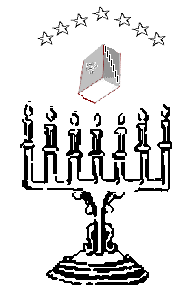The seven churches are in metaphor. As you obviously do not know what a metaphor is I will help you along... The bible, especially Revelation, is written with much metaphor. I cannot believe one can study Revelation, and the bible, and see the same perspective as another fellow believer. You will agree and disagree on the interpretation of different passages. If a pastor prepares a message and does so in prayer and in council of the Holy Spirit it will bless the ears and hearts of those listening. If someone goes to interpret scriptural prophecy and does so in the flesh such interpretation will not go over with blessing. And to give example....
John Bunyan was a great writer in metaphors/parables and he explains the use of them in his "The Barren Fig Tree" work (
http://www.chapellib.../bun-barren.pdf):
6 He spake also this parable; A certain man had a fig tree planted in his vineyard; and he came and sought fruit thereon, and found none.
7 Then said he unto the dresser of his vineyard, Behold, these three years I come seeking fruit on this fig tree, and find none: cut it down; why cumbereth it the ground?
8 And he answering said unto him, Lord, let it alone this year also, till I shall dig about it, and dung it:
9 And if it bear fruit, well: and if not, then after that thou shalt cut it down. -
Luke 13:6-9
In parables there are two things to be taken notice of, and to be inquired into of them that read.
First, The metaphors made use of.
Second, The doctrine or mysteries couched under such metaphors.
The metaphors in this parable are,
1. A certain man;
2. A vineyard;
3. A fig-tree, barren or fruitless;
4. A dresser;
5. Three years;
6. Digging and dunging, &c.
The doctrine, or mystery, couched under these words is to show us what is like to become of a fruitless or formal professor. For...
1. By the man in the parable is meant God the Father.
2. By the vineyard, his church.
3. By the fig-tree, a professor.
4. By the dresser, the Lord Jesus.
5. By the fig-trees barrenness, the professor's fruitlessness.
6. By the three years, the patience of God that for a time he extendeth to barren professors.
7. This calling to the dresser of the vineyard to cut it down, is to show the outcries of justice against fruitless professors.
8. The dresser's interceding is to show how the Lord Jesus steps in, and takes hold of the head of his Father's axe, to stop, or at least to defer, the present execution of a barren fig-tree.
9. The dresser's desire to try to make the fig-tree fruitful, is to show you how unwilling he is that even a barren fig-tree should yet be barren, and perish.
10. His digging about it, and dunging of it, is to show his willingness to apply gospel helps to this barren professor, if haply he may be fruitful.
11. The supposition that the fig-tree may yet continue fruitless, is to show, that when Christ Jesus hath done all, there are some professors will abide barren and fruitless.
12. The determination upon this supposition, at last to cut it down, is a certain prediction of such professors unavoidable and eternal damnation.
But to take this parable into pieces, and to discourse more particularly, though with all brevity, upon all the parts thereof. "A certain MAN had a fig-tree planted in his vineyard." The MAN, I told you, is to present us with God the Father; by which similitude he is often set out in the New Testament. Observe then, that it is no new thing, if you find in God's church barren fig-trees, fruitless professors; even as here you see is a tree, a fruitless tree, a fruitless fig-tree in the vineyard.
Fruit is not so easily brought forth as a profession is got into; it is easy for a man to clothe himself with a fair show in the flesh, to word it, and say, Be thou warmed and filled with the best. It is no hard thing to do these with other things; but to be fruitful, to bring forth fruit to God, this doth not every tree, no not every fig-tree that stands in the vineyard of God. Those words also, "Every branch in me that beareth not fruit, he taketh away," assert the same thing. There are branches in Christ, in Christ's body mystical, which is his church, his vineyard, that bear not fruit, wherefore the hand of God is to take them away: I looked for grapes, and it brought forth wild grapes, that is, no fruit at all that was acceptable with God (
Isaiah 5:4). Again, Israel is an empty vine, he bringeth forth fruit unto himself, none to God; he is without fruit to God (
Hosea 10:1). All these, with many more, show us the truth of the observation, and that Gods church may be cumbered with fruitless fig-trees, with barren professors.


